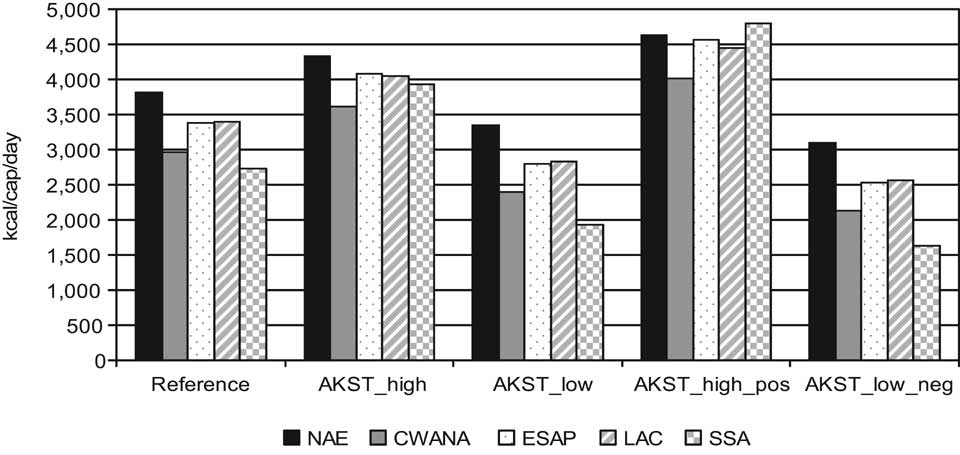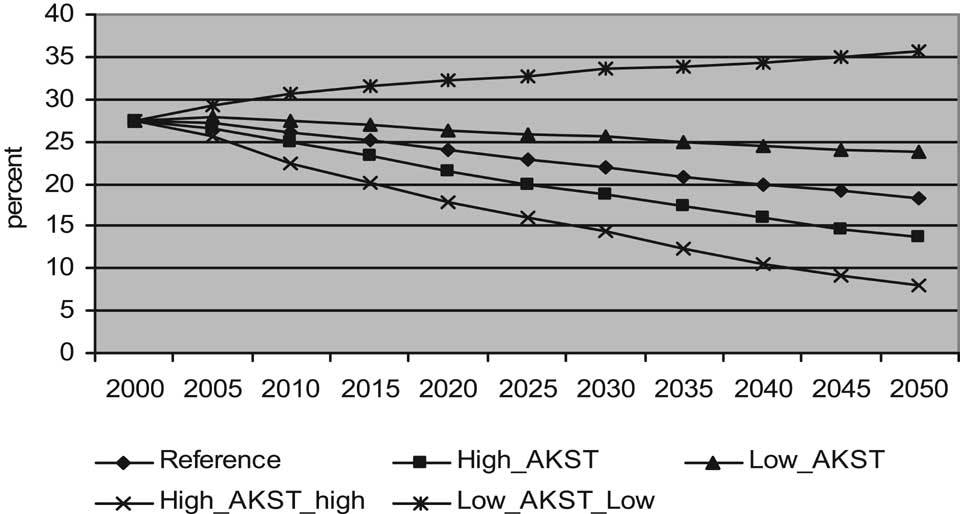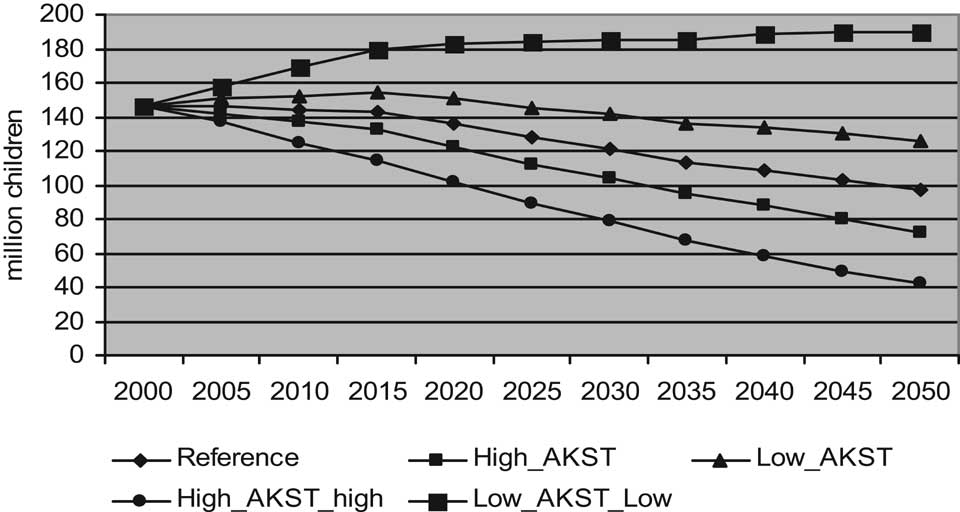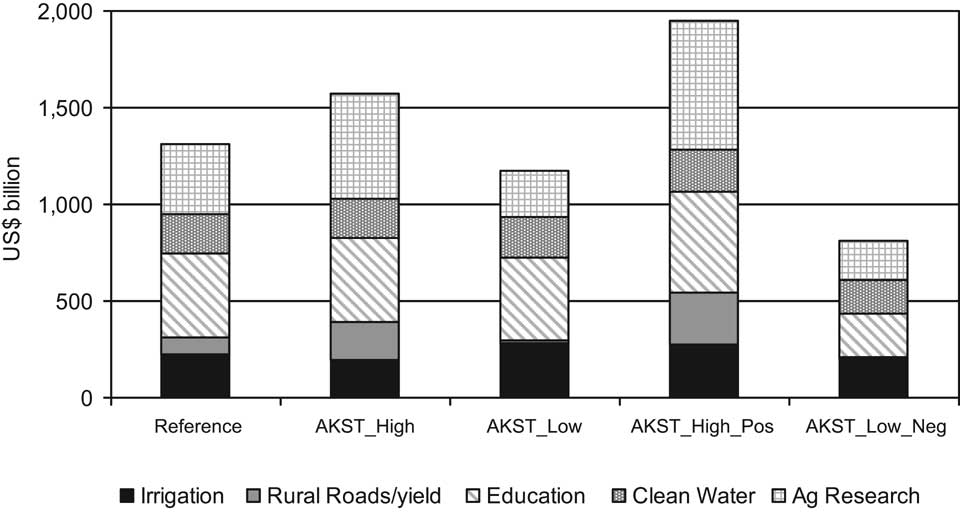
Figure 5-36. Average daily calorie availability per capita, projected 2050, selected regions, AKST variants. Source: IFPRI IMPACT model simulations.
5.4.4 Focus on bioenergy
Among the renewable sources, bioenergy deserves special attention (energy from crops, lingo-cellulosic products and timber byproducts). Currently, bioenergy is the only alternative to fossil fuels that is available for the transport sector. Studies of the potential confirm that the production of liquid fuels from biomass could meet the demand in the global transport sector. Bioenergy can also be used to produce electricity and heat. Large-scale application of biomass as an energy source will mean that in the short term bioenergy will primarily be derived from specific crops that are cultivated for energy production (sugar cane, maize, oil crops). The eventual contribution from biomass greatly depends on the expectations of extracting energy from lingo-cellulosic products (both woody and non-woody products, like poplar and grass). The large-scale cultivation of biomass for energy applications can mean a considerable change in future land use, and could compete with the use of this land for food production. Other aspects of sustainability, such as maintaining biodiversity and clean production methods, also play a role here (see Chapters 3, 4 and 6). Under scenarios in which agricultural land could become available as a result of rapid yield improvement and slow population growth, bioenergy potential is considerably higher than in land-scarce scenarios. Results for bioenergy can become more positive when the second generation bioenergy (the

Figure 5-38. Malnourished children under alternative AKST variants in developing countries. Source: IFPRI IMPACT model simulations.

Figure 5-37. Malnourished children under alternative AKST variants in developing countries. Source: IFPRI IMPACT model simulations.
lingo-cellulosic bioenergy sources) becomes available, since these sources offer more CO2 reductions and use less land per unit of energy. However, this second generation bioenergy is not expected to become available within the coming 10 to 15 years (UN-Energy, 2007).
To explore the bioenergy potential under the IAASTD reference case, the procedure of De Vries et al. (2007) is followed in which the potential for bioenergy is defined as the amount of bioenergy that could be produced from (1) abandoned agricultural land and (2) 40% of the natural grass areas (see Appendix). Under these assumptions, the technical potential in 2050 is around 180 EJ in the absence of residues mainly from USA, Africa, Russia and Central Asia, South East Asia and Oceania. Obviously this number is very uncertain—and depends, among other factors, on (1) agricultural yields for food production, (2) yields and conversion rates for bioenergy, (3) restrictions in supply of bioenergy (to reduce biodiversity damage), and (4) uncertainty in water supply. The potential supply from residues is also very uncertain and estimates range from very low numbers to around 100 EJ. In the reference projection, a potential supply of 80 EJ is assumed. Until 2050, in this scenario the overall impact of bioenergy on biodiversity is negative, given the direct loss of land for nature versus the long-term gain of avoided climate change (SCBD/MNP, 2007).

Figure 5-39. Investment requirements, alternative AKST variants, developing countries. Source: IFPRI IMPACT model simulations.